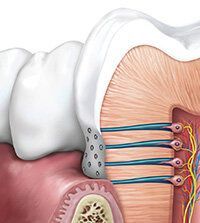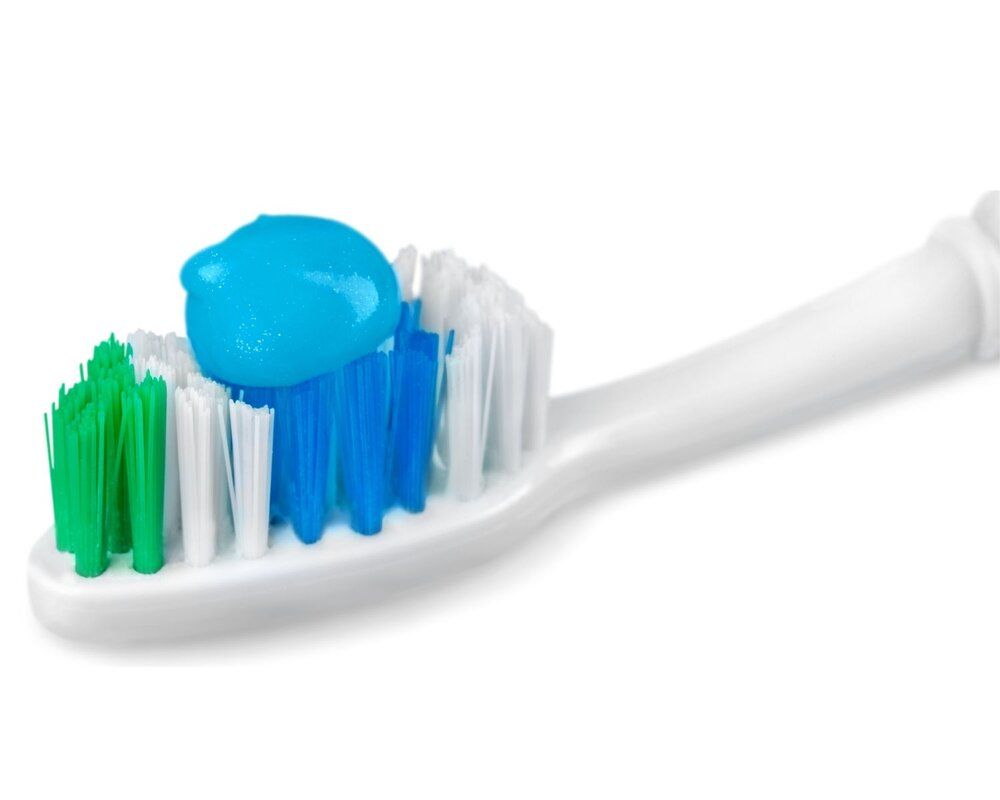SENSITIVE TEETH?
Treatment Options
-
Desensitization with X Pur Crystal
Exposed roots can be treated by applying a product called “Crystals” by oral science onto sensitive root surfaces. This is a water based potassium oxalate made of natural acids and salts that quickly forms insoluble calcium crystals. Instant relief in seconds blocking fluid flow to help relief sensitivity. Application can last up to 6 months.
-
Advantage Arrest
Helps reduce sensitivity within a tooth and helps arrest the progress of an already formed cavity in permanent and primary teeth. Upon application of a decayed surface, a layer of silver protein conjugate and silver minerals form, increasing resistance to acid dissolution and enzymatic digestion. Fluorapatite and hydroxyapatite form, causing the treated lesion to increase in mineral density and hardness. The silver acts as a antimicrobial, the fluoride acts to demineralize and the proteins that break down the dentin are inhibited. However, SDF can stain heavily meaning it will stain decayed or demineralized sites and soft tissues, but not healthy tooth structure.
-
Laser root desensitization
Laser root desensitization is an efficient tool for the immediate treatment of tooth hypersensitivity. Lasers have been proven to be effective at decreasing or even eliminating dental sensitivity for almost a entire year or even two. It directs the laser energy into the sensitive areas and the laser suppresses the potential of the nerve fibers by sealing the tubules. It is a simple procedure which requires no anesthetic. In our office, we do this fast, cost effective and pain free procedure with a high success rate.
-
Desensitizing Toothpastes
After several uses, desensitizing toothpaste can block pain associated with sensitive teeth. There are many options available, such as Sensodyne or Clinpro, based on your needs.
-
Fluoride with Fluorimax
This treatment originates from pine trees and helps protect from acid attacks keeping the enamel strong. Treatment of fluoride strengthens the enamel, which can reduce pain and prevent decay. Prescription fluoride can be used at home with a customized tray. Ask us about getting a prescription and how to get your customized tray!

Exposed pores in the dentin layer
SENSITIVITY CAUSES
-
Sensitive teeth are typically the result of exposed tooth roots or worn tooth enamel.
Sometimes, tooth pain is caused by other factors, such as a cavity, a cracked or chipped tooth, a worn filling, or gum disease.
-
The most common cause of sensitive teeth is exposure of the dentin layer of your teeth roots.
Dentin is the porous second layer of a tooth below and under the protective enamel. When tooth enamel is lost and gums recede, the pores allow the elements or pressure to reach nerve endings within the teeth, resulting in pain.
-
Dentin can be exposed by the natural recession of gum lines that progresses with age.
Other causes are harsh brushing, incorrect brushing techniques, and gum disease caused by plaque build-up.
-
The dentin layer can also be exposed when the protective enamel of the tooth crown is worn away.
This damage can be wrought by aggressive brushing, using hard-bristled toothbrushes and very abrasive toothpastes, clenching, grinding, and even acidic diets.
Prevention
Once treated, we want you to be able to be pain-free for as long as possible!
We recommend flossing, and brushing your teeth twice a day using a soft-bristled toothbrush and fluoride toothpaste. Ensure you’re brushing at a 45-degree angle towards the gum with gentle force instead of rigorous or harsh brushing. Remember: soft toothbrush and a pea-sized amount of toothpaste are all you need.
If you grind your teeth, ask us about getting customized mouth guards. Teeth grinding can break down the enamel of the teeth or cause fractures leading to dentin exposure.
Rinse your mouth with water or a baking soda solution after consuming acidic or sugary beverages to balance out the pH in your mouth. Doing so will prolong the effects of your sensitivity treatment and keep you smiling and comfortable, enjoying food and beverages for a long time.

You don’t need too much toothpaste!
Office hours
Monday Sunday Closed
Tuesday 10:00-6:00PM
Wednesday 10:00-6:00PM
Thursday 10:00-5:30PM
Fridays 10-4:30 PM

